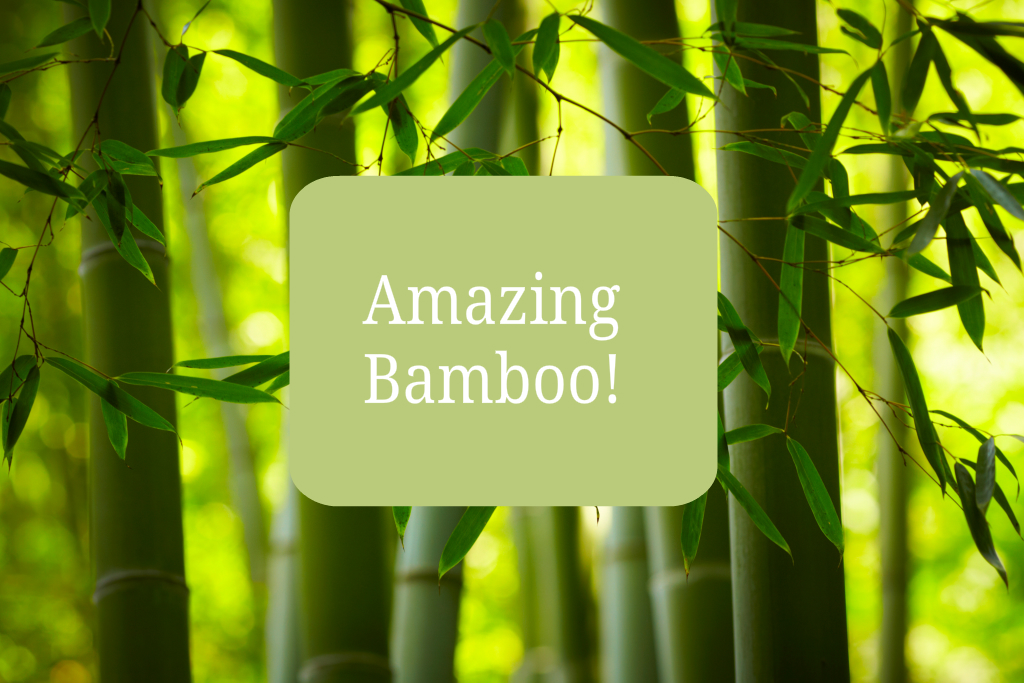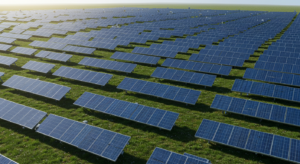About Bamboo
Amazing Facts About Bamboo
Bamboo – an amazing and versatile plant. Let’s dive in and discover some amazing qualities of bamboo. You will also discover how bamboo is an exceptional example of an eco-friendly resource, and some places it’s found in history.
Bamboo in History
- Pop Quiz! What did Thomas Edison use as the filament in the first light bulb?
- What did Alexander Graham Bell use to make the first phonographic needle?
Would it surprise you to learn that the answer is the same for both? How about if you were told that the material used was bamboo – a grass!
Well, it’s true, both Edison and Bell used a member of the grass family to make their inventions work—bamboo!
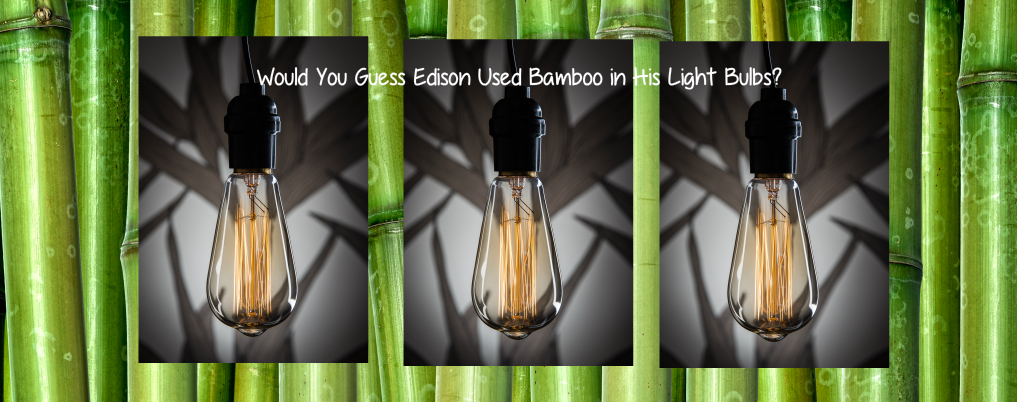
Bamboo Uses
- Bamboo has probably the most known uses of any plant with over 1500-recorded uses just in Asian alone.
- It can be used to build roads and bridges, houses and schools, and is often used as scaffolding.
- Bamboo can also be used for medicinal purposes, feed people and animals (it has superb antioxidant and healing properties), to make clothes and accessories, fiber for bedding, diapers, toys, and even different percussion, wind, and string instruments.
- The versatility of bamboo is so profound that many countries in Asia revere and some people even have deify it. In India, it is called ‘the Wood of the Poor’; in China they call it ‘the Friend of the People’, and in Vietnam they call it ‘the Brother’.
Bamboo and Environmental Sustainability
With so many ways to use it, it’s no wonder that this tree-like grass is the talk of environmental sustainability circles.
For some reason, it seems as if terms like ‘bamboo’ and ‘sustainability’ and ‘eco-friendly’ have become buzzwords—misunderstood and even misued. We break it down a bit more in this post if you are confused.
In order to really understand why bamboo is such a great sustainable resource, as well as what makes it so eco-friendly, we need to understand we need to clear up any misconceptions and readjust our understanding of what these words/terms mean. Bamboo is truly a green product.
Origin of Eco-friendly
To be eco-friendly, of course, means to participate in actions that are not harmful to the environment.
But what is this harm that I must not do? This term has become the biggest buzzword of them all often being tossed around without much thought, perhaps due to the ambiguity of what “doing harm” means.
Origin of Prefix: Eco
The prefix eco- is a combining form of the Latin word oeco (meaning house or household) and refers mostly to the natural environment and ecology. The study of the natural environment is called ecology.
Eco- and Our Natural World
Our natural world is a dynamic entity, one might argue even more so. When we study ecology, we really study of the interactions of living organisms and the non-living things in the environment. The study of ecology is vital to understanding the niche that organisms play in the natural world. Each organism has an integral role to play to maintain the balance of an ecosystem.
Removing or introducing even one species can have drastic impacts for years to come; i.e. rabbits changing the landscape of Australia, Burmese pythons decreasing the biodiversity in Florida, and zebra mussels clogging pipes in the Great Lakes.
What Does it Really Mean to be Eco-Friendly?
So, now that we’ve had the opportunity to pause for understanding, let’s re-examine: What does it really mean to be eco-friendly?
To be eco-, or that is ecologically friendly most accurately means to be in a constant state of awareness of the delicate balance of there exists in the natural world and to take careful action to maintain that balance. Maintenance is the key. We can better appreciate what this environmental sustainability movement is about.
Sustainability
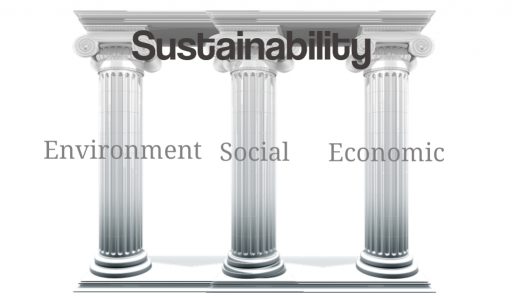
Sustainability, by definition, is “meeting the needs of the present without compromising the ability of the future generations to meet their needs.”
In order to meet everyone’s needs while ensuring supplies for those future generations, there are a few key characteristics of sustainable materials that need to be kept in mind like where the resource is found (is it only found in one area of the world or several), how fast it grows, and how long it will last.
There are few resources that have the right combination of these traits and bamboo is one of them, so let’s now look at what makes it such a great sustainable resource.
Natural history: What is bamboo?
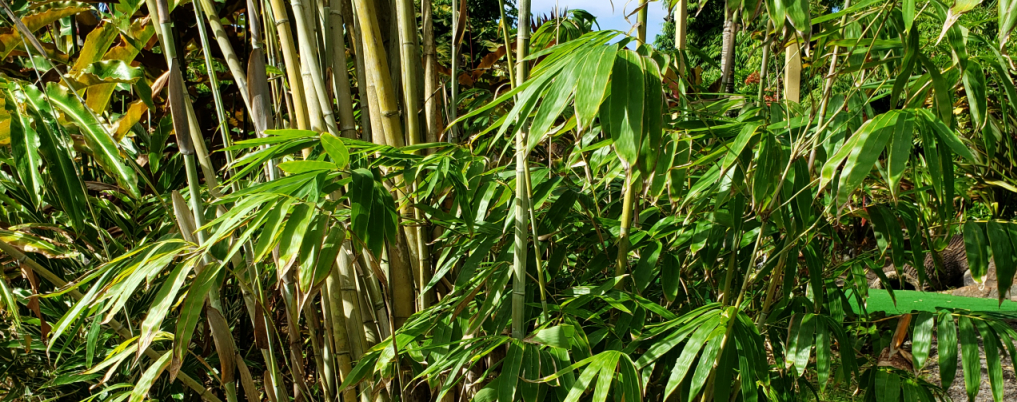
As is usual when breaking down buzzwords, the best way to understand is by taking a look close look at the science. When you do, the answer is quite simple and can be explained by examining its natural properties. Probably most interesting is that it’s part of the grass family.
About Bamboo: The Interesting Facts
The Bamboos (Bambusoidaea family) consists of 1439 different species in 116 genera. It is one of the 12 subfamilies of the Poacea grass family.
Bamboo grows almost everywhere in the world. There are about 1200-1500 species of bamboo native to every continent except Europe and Antarctica and ranging in height from a few inches to 120 feet.
Regardless of its location on earth, all bamboo of a given population will simultaneously flower, produce see and then die. Of the many species, bamboo can be divided into 2 major types: clumping bamboo and running bamboo. The clumping type is referred to as a “well-behaved” type, while running bamboo helps to explain why this one plant is so widespread across the globe—once it starts growing, it off to the races!
This is because of the underground root system (called rhizomes) that runners have. Runners are so good at spreading that gardeners must be careful should they choose to use it as an ornamental because they can become an invasive species really quick.
Bamboo is a grass. Bamboo is a member of the grass family (Poaceae), which means it’s not only a close relative of the grass in your lawn it’s also a cousin of rice, wheat, oats, and corn. That also means that it grows really quickly. It is actually the fastest growing plant clocked speeding upward at about 47 inches in a 24-hour period! It is able to attain its great height by throwing a ‘horizontal truss’ (the join or node) across at distances carefully determined by stress levels in the ascending culm.
Bamboo can also tolerate extreme conditions that most plants cannot. It was actually the first plant to re-green after the atomic blast in Hiroshima in 1945.
The stem of bamboo, known as the cane or culm, is the hardiest natural structure to evolve in millions of years of life on earth. It’s so strong that it even rivals steel with its ability to withstand forces of up to 52,000 pounds per square inch. When working with bamboo, have extra saw blades on hand as it will surely eat up a blade quickly! Between the strength of the culm, its horizontal trusses, and leveraging its root system, the strength and durability of bamboo is simply unmatched and makes one of the sturdiest natural resources.
Besides the famous pandas of China, other wildlife that eats bamboo include Mountain gorillas, red pandas (in the raccoon family) of Nepal, bamboo lemurs of Madagascar, and the bamboo rat.
Conclusion: Amazing Bamboo!
Are you amazed at the wondrous nature of ‘the Wood of the Poor’ yet? Who knew that one plant could be so dynamic?
Perhaps now, pandas won’t be the only species to love bamboo! With such variety, we can now understand why so many different products can be made from this one resource.
Bamboo’s unique combination of properties such as quick growth, unrivaled strength and durability, and its vast abundance all fall neatly under the concept of sustainability.
It’s simple: we want cost-effectiveness, so what’s more cost-effective than something that is super abundant and can be replaced quickly?
And if that product is durable enough to last a lifetime, its value increases even more. Bamboo is definitely a resource that checks all those boxes.
Can it ‘Save the World’?
Well…maybe but it can help mitigate for climate change. We should take a more serious gander at all the possible innovations that could come out of this amazing bamboo plant. We can become more conscious of our surroundings, and use our resources wisely!
At Positively Sustainable, we are committed to providing information that will help you to make confident choices about the products you buy. We believe in the power of ethical consumerism to hold businesses accountable and make sure that they are manufacturing products in an environmentally and socially responsible way.
Join us on our journey towards a positively sustainable future.

